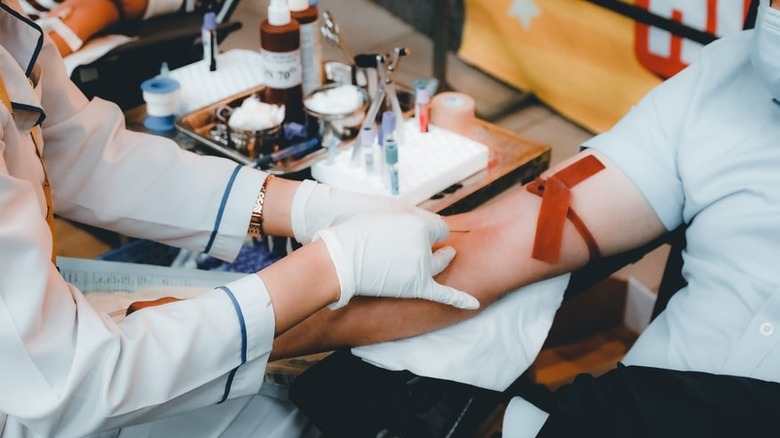This Is What Really Happens When You Get A Blood Transfusion
Through the kindness and generosity of blood donors, millions of people get another chance at life every year. People often need blood transfusions after surgery or injury, or when they have certain conditions such as anemia, sickle cell disease, hemophilia, or cancer (per National Institutes of Health). We all know that blood transfusion is important, but have you ever wondered what actually happens in the process?
In most cases, your blood will be tested before your transfusion to make sure the blood you are receiving is compatible. This is important because receiving an incompatible blood type can cause a potentially deadly reaction. If you are bleeding out profusely and there is not enough time to check your blood type, you will receive O negative blood. Since O negative red blood cells have no A or B antigens or Rh factor, they are unlikely to trigger an immune reaction in people of any blood type (per American Red Cross).
This is what to expect during your blood transfusion
Once your health care provider knows which blood would be safe for you, you are ready to receive your transfusion. An IV will be inserted into one of your blood vessels, and will transport new blood into your veins. Your vitals will be monitored throughout the procedure, but Mayo Clinic advises telling your nurse if you experience chills, fever, unusual itching, or chest or back pain.
Depending on how much blood you receive, the transfusion is generally complete within one to four hours. Your IV will be removed and if no other medical care is necessary, you will generally be able to go home and resume daily activities (per University of Rochester Medical Center). Fortunately, most people don't suffer any side effects during or after the procedure, but Mayo Clinic recommends calling your doctor if you experience shortness of breath or chest or back pain within a few days of receiving the transfusion.


